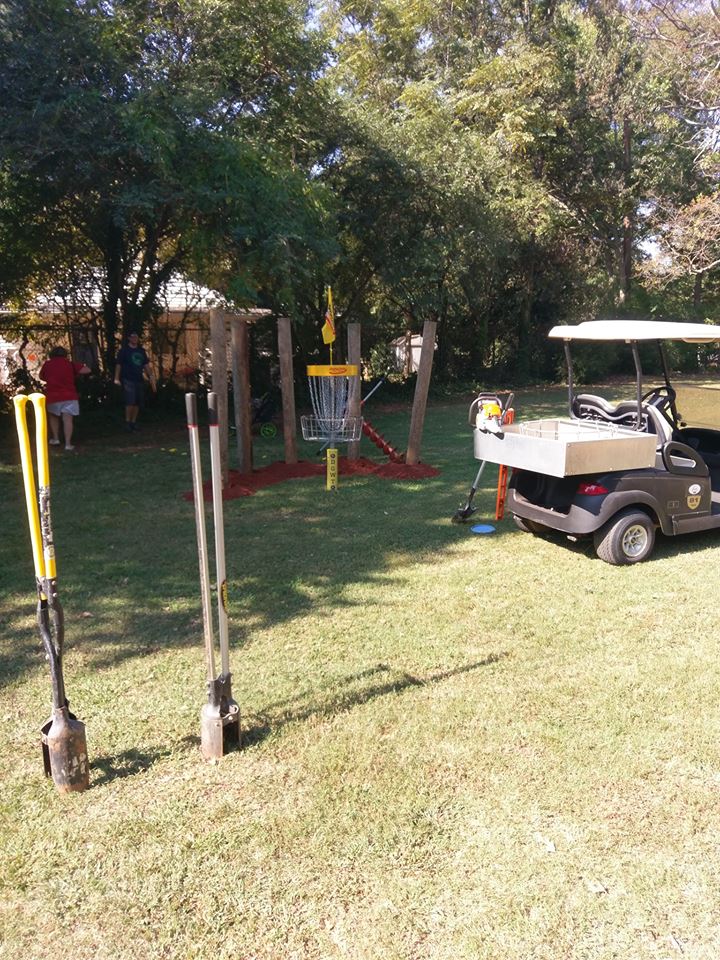Hi Lyle,
One of the design limitations for hole 2 is the proximity of the fence to the target. It's relatively easy for the players at this level to use the fence as a backstop, particularly for sidearm, anyhyzer, and rolling approaches. Low hanging limbs mitigated the backstop advantage in the past, but the limbs were cut over the winter leaving (as you can see in the picture) a pretty easy putt from the fence and taking a lot of the teeth out of the left side OB. The old limbs did not preclude a putt, but they forced an altered putt. Likewise, the new posts do not block putts, but they force an angled release. As in other places, a huge wall does not quite seem like the right solution.
My son Andrew has overseen the design layout and course updates for Winthrop Gold this year. Andrew's goal with the specific arrangement of the posts was to:
1) Avoid stymies for sure and also avoid the need for extreme angles. Andrew chose gaps of about two and a half feet between posts. It appears that players should be able to negotiate the posts with less than 45 degrees of angle.
2) Lessen the boundary effect that MTL described. As with all obstacles, there is a consequence boundary. Andrew chose a semicircular design in concert with width of the gaps to lessen the boundary consequence. A little bit longer or righter is harder but not much harder. Way right against the fence is definitely harder, but not impossible. We wanted to approximate the effect of the old branches; adding hazard near the green would have been a much higher consequence than the branches posed previously.
3) Avoid having the posts themselves acting as a backstop as Chris described. The posts are four feet from the pole. The close distance seemed to keep the potential backstop small while allowing sufficient room for the players to negotiate reasonably angled putts.
4) Be reasonably conservative. This is a new concept that may have applications on other courses. It could have been made tougher and still have been fair and reasonable. But we did not want to introduce the concept with an extreme version. I feel the Championship works as venue to introduce new ideas because it has a lot of interested stakeholders and we know we can learn from input for next year just as we did in the past with tee times, multiple multiple shot holes, fundraising discs, hazard, etc.
The jury is still out on the height of the posts. The current height seems to look better, but it provides a bit more of a backstop. Coming back and chainsawing the tops off if necessary seemed easier than pulling them out and raising them.
Real trees would definitely look better. We looked at Italian Cypress, but adequately sized ones were pretty expensive. I was also concerned about the need to adjust the layout in the future. Transplanting trees is always a dicey proposition, even when care is taken. We looked at artificial trees, but there were also pricey. When we finalize the arrangement, we might plant English Ivy to wrap around the posts. I think that would be a nice look. For now, I will say that the posts are quite drought and critter resistant.
~ Harold

